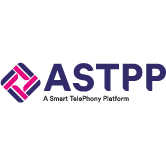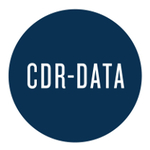What Is Telecom Expense Management Software?
Telecom Expense Management (TEM) software is a solution for enterprises to effectively manage their telecommunications expenses. With the rising complexity and range of communication services available, businesses of all sizes must have a software solution in place to track and evaluate their spending. TEM software streamlines the process of tracking, auditing, and allocating telecommunications charges, giving organizations important insights and control over their communication costs.
It enables businesses to track their use of multiple communication services, such as voice, data, and messaging, in order to find any inconsistencies or possibilities for cost savings. This software usually contains tools for invoice administration, contract negotiation, and vendor management, helping firms to streamline communication services and negotiate better terms with their suppliers.
Businesses can quickly track and manage many carriers, services, and contracts using TEM software, removing the need for manual input and lowering the risk of human mistake. Another important feature of TEM software is its ability to provide real-time visibility into telecom expenses, allowing organizations to make more educated decisions and regulate their communication spending.
The software delivers reports and analytics that indicate expense trends, possible savings, and areas of overspending, allowing firms to take corrective action quickly. In addition to cost management, several TEM software suppliers give tools for inventory management, asset tracking, and compliance monitoring. This guarantees that firms have a comprehensive understanding of their telecommunications assets and are following regulatory rules.
As businesses increasingly rely on many communication channels to run their operations, TEM software has become an essential investment for any organization trying to reduce communication costs. This program saves firms time and resources by automating and streamlining the expense management process, allowing them to make more strategic and cost-effective decisions.
What Are The Recent Trends In Telecom Expense Management Software?
Telecom expense management software has seen substantial development and improvement in recent years to keep up with the continuously changing telecommunications industry. From old manual processes to completely automated solutions.
Here are the important developments influencing the telecom expense management software market:
1. Cloud-Based Solutions: As cloud technology has grown in popularity, many telecom expense management software companies have begun to provide cloud-based solutions. This has various benefits, including real-time data availability, scalability, and remote accessible.
2. Automation And Machine Learning: Manual techniques for tracking telecom expenses can be time-consuming and error-prone. The most recent development in telecom expense management software is the use of automation and machine learning to expedite procedures and increase accuracy.
3. Enterprise System Integration: To guarantee that telecom expenses are managed seamlessly, several software vendors now offer integration with popular enterprise resource planning (ERP) systems. This makes it easy to track and control spending, as well as make smarter decisions.
4. Mobile Functionality: Mobile devices have become an essential part of our daily lives, and telecom expense management software has kept up with this development. Many providers now provide mobile apps that allow users to track, control, and authorize expenses on the move.
5. Improved Security: As the frequency of data breaches and cyber threats has grown, organizations have prioritized security measures. Telecom expenditure management software now includes advanced security features like encryption, multi-factor authentication, and data backup to protect sensitive data.
6. Cost Optimization: Telecom expense management software not only tracks and manages expenses, but it also helps to optimize costs. Businesses can use advanced analytics and reporting to detect and reduce unnecessary expenditure, negotiate better contracts, and save money.
Overall, recent improvements in telecom expenditure management software are aimed at increasing efficiency, accuracy, and cost optimization. Businesses can benefit from technological improvements to streamline their telecom expenditure management operations and have greater control over their telecommunications costs.
Benefits Of Using Telecom Expense Management Software
Telecom expenditure management software, often known as TEM software, is a useful tool for firms wanting to reduce communication costs. It provides a consolidated platform for managing and minimizing telecom expenses, bringing several benefits to businesses of all sizes.
Let's take a closer look at the key advantages of adopting telecom expense management software.
1. Cost Savings: One of the primary reasons firms use TEM software is to cut costs. With the capacity to manage and analyze all telecom expenses, organizations may discover areas of overspending and take the required steps to reduce communication costs. This can result in significant cost savings over time, allowing firms to focus their budgets on more vital areas.
2. Improved Visibility And Control: Telecom expenditure management software gives businesses a complete picture of all their telecom expenses, such as phone bills, data plans, and use. This level of visibility and control enables businesses to precisely manage their spending, discover recurring charges or errors, and negotiate better pricing with service providers. It also allows organizations to track consumption patterns and find possible cost savings.
3. Time-Saving Automation: TEM software automates numerous time-consuming operations, including invoice processing and analysis, bill verification, and payment processing. This not only saves businesses significant time and resources, but it also lowers the possibility of human error. Businesses can use automation to optimize their telecom expenditure management processes and focus on more important duties.
4. Increased Efficiency: By consolidating all telecom expenses onto a single platform, TEM software removes the need for manual data entry and several spreadsheets. This leads to enhanced efficiency because staff may immediately access all relevant information and make informed decisions. Businesses can use real-time data and reporting to identify possible issues and address them quickly, resulting in increased efficiency.
5. Improved Compliance And Security: TEM software helps firms comply with government rules and corporate standards by tracking and managing telecom expenses. It also includes security features like user authentication and data encryption to safeguard sensitive information. Businesses can use TEM software to ensure that their telecom expenses are managed securely and in compliance.
Important Factors To Consider While Purchasing Telecom Expense Management Software?
When it comes to buying Telecom Expense Management Software, there are several crucial elements to consider to ensure a profitable investment. With the growing complexity and cost of telecommunications, having the correct software in place can assist firms in successfully managing and controlling their telecom spending.
Here are the essential elements to consider while assessing and selecting Telecom Expense Management Software.
1. Features And Functionality: The first and most important considerations are the software's features and functionality. Look for a technology that can automate invoice processing, expense allocation, and dispute resolution. It should also allow for real-time visibility into consumption and expenses, as well as customisable reporting options.
2. Scalability: As your organization expands, so will the amount of data and communication bills. As a result, it is critical to select software that can expand with your company and support future expansion without sacrificing speed.
3. Integration Capabilities: Your telecom expense management software should be able to work with your existing systems, such as accounting and ERP software, to reduce duplicate data entry and enhance accuracy.
4. User-Friendliness: The software's interface should be intuitive and simple for your staff to use and explore. This will provide a smooth onboarding experience and shorten the learning curve.
5. Mobile App: With staff working remotely and on the road, a mobile app for your Telecom Expense Management Software can be extremely useful. It enables employees to view their telecom bills and use statistics via mobile devices, providing them with timely insights and encouraging cost-conscious behavior.
6. Security: Telecom expenses contain sensitive information, thus it is critical that your program has strong security mechanisms in place to safeguard your data from cyber threats.
7. Vendor Support: It is critical to find a vendor who provides outstanding customer service and is responsive to your requirements. Examine the level of support they offer, including training and support resources available to your staff following implementation.
8. Cost: Finally, assess the software's cost and return on investment. Seek a system that provides upfront pricing and a detailed explanation of costs, including any additional fees or charges.
When choosing Telecom Expense Management Software for your firm, consider these critical elements to make an informed decision. It is also recommended that you demo the software and read customer reviews to gain a better idea of its features and performance.
What Are The Key Features To Look For In Telecom Expense Management Software?
When seeking for Telecom Expense Management Software, a few critical characteristics are required to successfully manage and optimize telecom expenses. These aspects should be thoroughly analyzed before making a purchase to verify that the software matches your company's requirements and goals.
1. Automated Expense Tracking And Reporting: The main purpose of Telecom Expense Management Software is to track and report on telecom expenses. Look for automated expenditure tracking software that can accurately capture all telecom charges and generate full data for review. This saves your team time and effort from manually tracking and streamlining spending.
2. Contract Management: Telecom Expense Management Software should have contract management features that allow you to track contract conditions, renewal dates, and negotiate pricing with telecom vendors. This tool allows you to stay on top of contract specifics while avoiding excessive expenses.
3. Inventory Management: Accurate inventory management of devices, services, and plans is critical for minimizing telecom expenses. Look for software that includes inventory management features to keep track of all telecom assets, consumption, and expenses.
4. Expense Analysis And Optimization: One useful feature to look for in Telecom Expense Management Software is the ability to evaluate expenses and make optimization recommendations. This enables you to find cost-saving opportunities, such as underused services or overages, and make informed decisions to maximize your telecom budget.
5. Automation And Integration: Look for tools that can automate and integrate processes to reduce manual labor. This may incorporate capabilities such as automatic invoice processing, integration with telecom carriers, and integration with your accounting or ERP system.
6. User-Friendly Interface: A user-friendly interface is essential for software uptake and productivity. Look for software with a simple and intuitive design that allows users to easily browse and complete tasks.
7. Customizable Dashboard And Reports: Customizable dashboards and reports are vital for successfully tracking and managing telecom expenses. Look for software that enables you to develop personalized dashboards and reports depending on your specific company requirements.
Which Industries Can Benefit The Most From Telecom Expense Management Software?
Telecom Expense Management Software (TEM) is an extremely useful tool for businesses of all sizes and sectors. However, certain industries will profit the most from deploying this software. Let's take a closer look at these industries and how they can use telecom expense management software to save costs, improve efficiency, and gain more control over their communication expenses.
1. Financial Services: The financial services business handles a large amount of transactions and communication, both internally and with customers. This level of communication frequently requires sophisticated telecom fees such as phone bills, internet costs, and mobile plans. TEM software provides visibility into these charges, allowing for precise tracking and allocation, which is critical for planning and cost control in this market. Financial sector firms can use TEM to get insights into their communication costs, uncover cost-saving opportunities, and maintain regulatory compliance.
2. Healthcare: The healthcare business relies greatly on effective communication for patient care, insurance coordination, and internal operations. Telecom expenses can quickly build up in this market, making it difficult to assess and control costs effectively. TEM software improves the overall process by delivering accurate and up-to-date information on telecom expenses. This allows healthcare organizations to stay within budget and allocate costs effectively. Furthermore, TEM software can assist healthcare organizations in complying with regulatory standards such as HIPAA.
3. Retail: Businesses in the retail industry sometimes have many locations, requiring them to manage multiple phone and internet bills. Without the proper instruments, this can be a time-consuming and laborious operation. TEM software enables retailers to track and control telecom expenses across all of their locations from a single platform. This enables merchants to spot errors, ensure proper billing, and enhance overall cost control.
4. Manufacturing: The manufacturing business relies largely on effective communication to manage supply chains, production processes, and staff collaboration. With sophisticated telecom needs, communication costs can quickly spiral out of control. TEM software provides visibility into telecom expenses, allowing manufacturers to identify cost-saving opportunities and optimize their telecom budget. This not only helps to streamline operations, but it also increases the overall profitability of the business.
5. Education: Educational institutions, ranging from K-12 to universities, rely extensively on technology for communication and operations. This leads in significant telecom costs that are difficult to track and manage manually. TEM software provides cost transparency and control, enabling educational institutions to properly allocate telecom charges and avoid overpaying.
Conclusion
To summarize, selecting the correct telecom expense management software for your company is critical to achieving optimal cost control, efficiency, and visibility into telecom spending. Understanding your company's specific demands and properly assessing the features and capabilities of various software solutions will allow you to make an informed decision that is consistent with your goals and budget.
When looking for telecom expenditure management software, consider its capacity to automate procedures, provide real-time tracking and reporting, and be expandable for future expansion. Consider the software's interoperability with your existing systems, as well as the quality of customer service and training it offers. It is also critical to thoroughly analyze the pricing structure and contract terms to avoid any surprises or hidden costs.
Finally, do not hesitate to contact the vendor to request a demo or trial period to test the software's functioning and usability. Overall, with the correct telecom expense management software in place, you can successfully manage your company's telecom expenses while lowering costs and improving overall business operations. So, take the time to investigate and compare several possibilities before making an informed decision that best suits your organization's specific requirements.






















